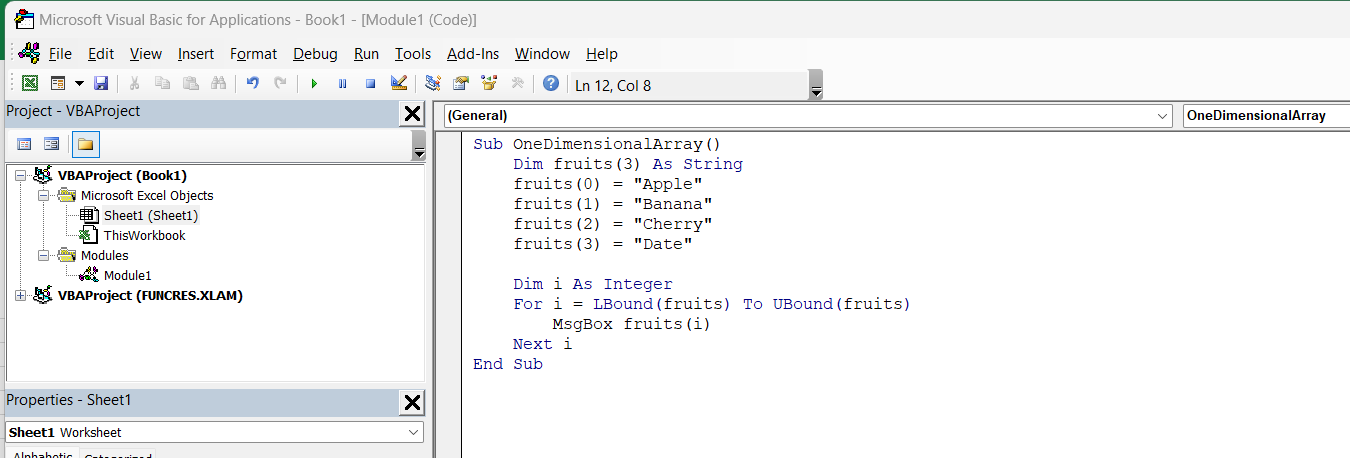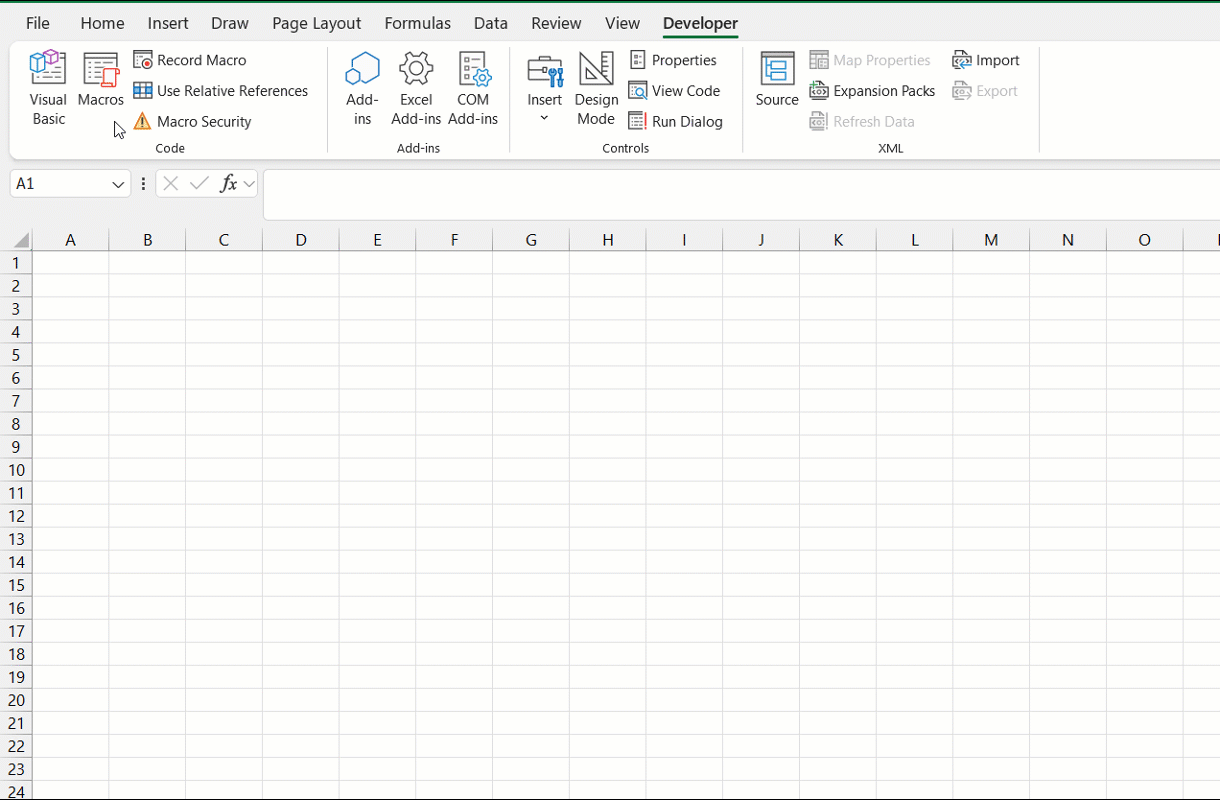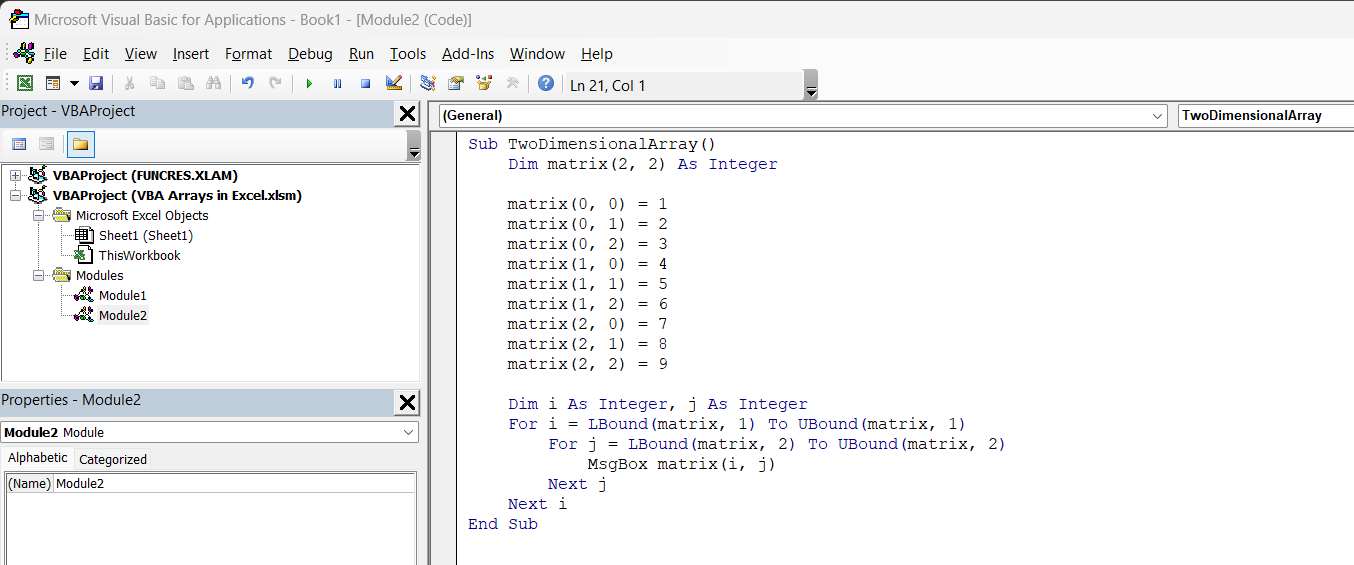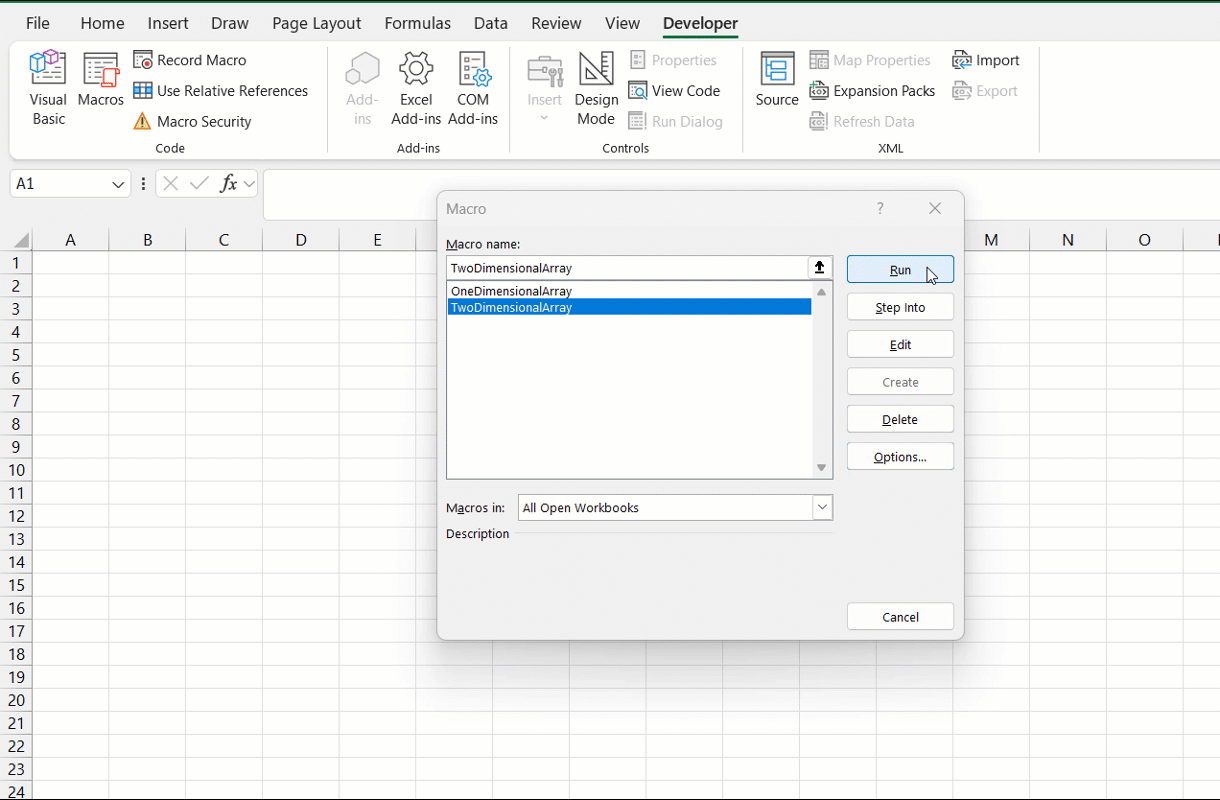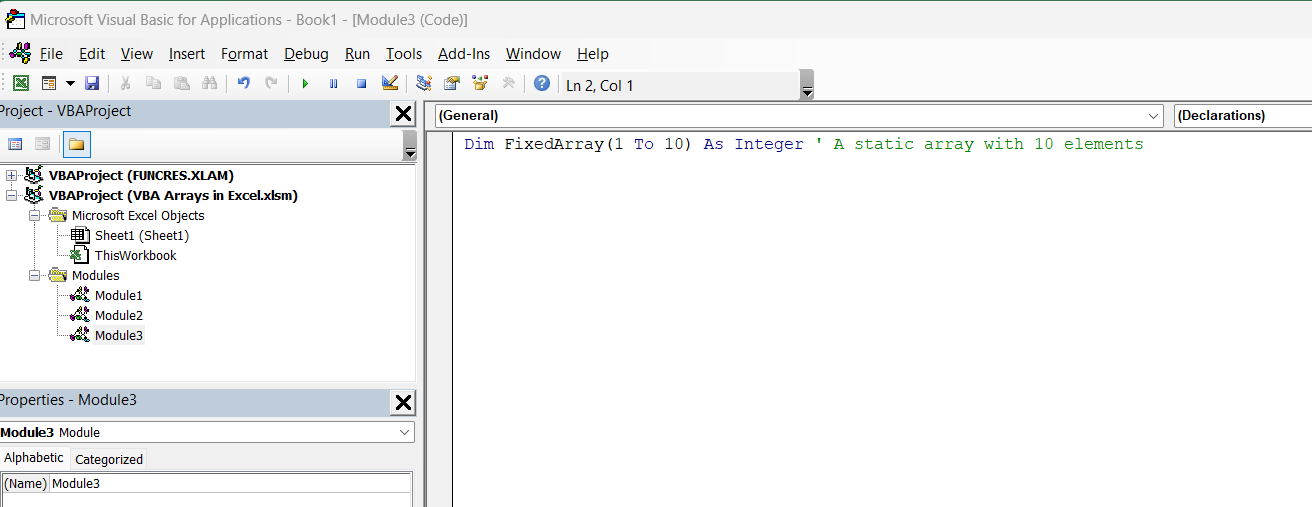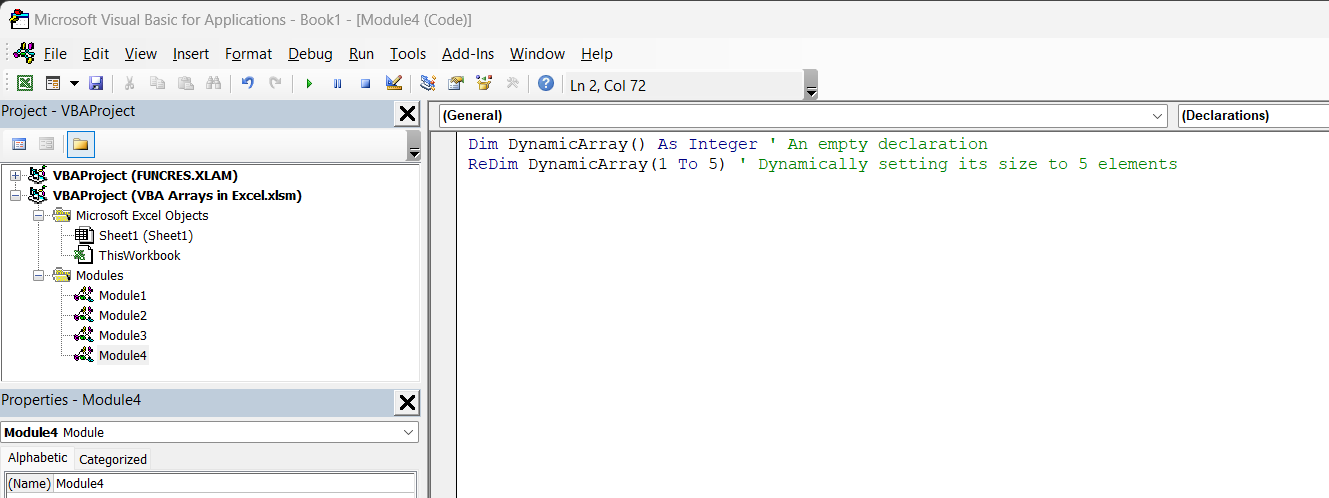In my journey with Excel VBA (Visual Basic for Applications), I’ve found arrays to be incredibly powerful tools for handling multiple values efficiently. Arrays allow me to manage large datasets and perform complex calculations with minimal code, which is particularly useful when working with extensive spreadsheets. By using a VBA array, I can store a collection of related data in a single variable, making it easier to manipulate and analyze multiple items simultaneously.
Key Takeaways:
- Introduction to VBA Arrays in Excel: Arrays are essential in VBA as they store multiple items in a single variable, making data management more efficient.
- Importance of VBA Arrays: Arrays simplify code by grouping related data, reducing the need for numerous individual variables and enhancing scalability.
- Streamlining Excel Tasks with Arrays: Arrays facilitate handling complex datasets by enabling repetitive operations through loops, thus saving time and minimizing errors.
- Understanding Array Types: One-dimensional arrays store a list of elements, while multi-dimensional arrays handle structured data like tables, catering to different data organization needs.
- Fixed vs. Dynamic Arrays: Fixed arrays have a predetermined size, while dynamic arrays can be resized as needed, offering flexibility for varying data volumes and applications.
Table of Contents
Introduction to VBA Arrays in Excel
What is the VBA Array and Its Importance
VBA arrays play a crucial role as they serve as containers that hold multiple items under a single variable name. Think of them like a set of boxes within one large container, where each box can hold a piece of data. The beauty of VBA arrays lies in their ability to organize and manipulate large sets of data within Excel efficiently.
Without arrays, we would have to work with dozens, if not hundreds, of individual variables, which would be unwieldy and error-prone. By grouping related data, VBA arrays simplify our code and make our spreadsheet applications more robust and scalable.
The Role of Arrays in Streamlining Excel Tasks
Arrays significantly enhance my ability to manage complex data sets in Excel. I find arrays exceptionally useful when I need to perform repetitive operations on a collection of values. Instead of writing repetitive lines of code for each operation, I can simply loop through an array, applying the same operation to each element.
This not only saves time but also reduces the likelihood of errors and ensures that the code is easier to maintain and understand.
Moreover, arrays can hold data temporarily without the need to use cells on a worksheet, which makes processing data faster and more efficient. This is especially true when I work with scenarios that involve large volumes of data or require complex data manipulation.
By manipulating the entire data set in memory, rather than through cell-by-cell operations, the overall performance of my Excel applications improves dramatically. Arrays are a powerful tool for any Excel VBA user looking to refine their spreadsheets and enhance productivity.
Understanding the Basics of VBA Arrays
One-Dimensional vs. Multi-Dimensional Arrays
A one-dimensional array is like a list. It stores a sequence of elements of the same type, and you can access each element using a single index.
Sub OneDimensionalArray() Dim fruits(3) As String fruits(0) = "Apple" fruits(1) = "Banana" fruits(2) = "Cherry" fruits(3) = "Date" Dim i As Integer For i = LBound(fruits) To UBound(fruits) MsgBox fruits(i) Next i End Sub
In this example:
fruits(3)declares a one-dimensional array with 4 elements (from index 0 to 3).- We assign different fruit names to each element.
- The
Forloop iterates through the array and displays each fruit name in the Message Box.
On the flip side, multi-dimensional arrays resemble a set of stacked shelving units, each layer representing an additional dimension. A two-dimensional array could be visualized as a grid, similar to the layout of a typical Excel spreadsheet with its intersecting rows and columns.
Sub TwoDimensionalArray() Dim matrix(2, 2) As Integer matrix(0, 0) = 1 matrix(0, 1) = 2 matrix(0, 2) = 3 matrix(1, 0) = 4 matrix(1, 1) = 5 matrix(1, 2) = 6 matrix(2, 0) = 7 matrix(2, 1) = 8 matrix(2, 2) = 9 Dim i As Integer, j As Integer For i = LBound(matrix, 1) To UBound(matrix, 1) For j = LBound(matrix, 2) To UBound(matrix, 2) MsgBox matrix(i, j) Next j Next i End Sub
In these examples:
- The
MsgBoxfunction is used to display each element of the array in a message box. - For the one-dimensional array, each fruit name will be displayed in a separate message box.
- For the two-dimensional array, each integer value will be displayed in a separate message box.
The distinction between one-dimensional and multi-dimensional arrays is important because it dictates how we organize data and write code. While one-dimensional arrays are simpler and great for straightforward lists, multi-dimensional arrays excel in handling structured data, like tables with multiple columns and rows. My choice between the two boils down to the specific needs of the task at hand.
Fixed and Dynamic Array Declaration
Declaring a fixed array is akin to renting a storage unit with a pre-determined size; I decide the dimensions when signing the contract, and they can’t change without a new agreement. In VBA, this translates to defining the array’s size during its declaration, and once set, it remains constant.
A snippet to declare a fixed array in VBA would look like this:
Dim FixedArray(1 To 10) As Integer ' A static array with 10 elements
Dynamic arrays, however, are more like expandable suitcases that I can resize based on the volume of items I need to carry. In VBA, I declare a dynamic array without initially specifying its size. The array’s dimensions can then be defined or altered on the fly using the ReDim statement as the need arises.
Here’s how I would declare and later resize a dynamic array in VBA:
Dim DynamicArray() As Integer ' An empty declaration ReDim DynamicArray(1 To 5) ' Dynamically setting its size to 5 elements
The dynamic nature of these arrays provides the flexibility needed when I am unsure about the amount of data or when I expect the data size to change during program execution. This adjustability makes them especially useful in various programming scenarios where data sets are mutable.
Tips & Tricks while using VBA Arrays
Handling Variant Values and Storing Data Efficiently
When working with varied data types within a single array, I turn to the versatility of the Variant data type. As its name implies, Variant can hold any type of data. This makes it the Swiss army knife of data types in VBA for when I’m dealing with a mix of integers, strings, dates, and more.
Consider this approach to storing different types of data:
Dim arrayData(3) As Variant arrayData(0) = "Olivia Smith" arrayData(1) = #1/1/2021# arrayData(2) = 123456 arrayData(3) = True ' Now arrayData holds a variety of data types.
Handling these Variant arrays efficiently means being mindful of their memory usage. Although Variant types take up more memory space — 16 bytes each — compared to their typed counterparts, the trade-off for convenience can be worthwhile in many situations. It is especially efficient when dealing with strings that are less than 7 characters long, as a Variant will use less memory compared to a String data type that allocates memory for 10 bytes plus the length of the string.
I use Variant arrays for data collection and manipulation when:
- The data set is small to mid-sized, where memory overhead isn’t a primary concern.
- The data types are mixed and can’t be homogenized easily.
- I need a quick solution without the overhead of multiple arrays or complex data structures.
However, if memory efficiency is critical or if all the data I’m dealing with is of a single type, I might opt for a specifically typed array or even consider a user-defined type (UDT), which offers more control over the memory footprint.
In my scripts, I constantly evaluate whether the flexibility of Variant types is worth their additional memory cost, choosing the most efficient approach for the task’s needs.
Benefits of Using Arrays
Efficiency: Arrays reduce the need for multiple variables, simplifying my code and reducing memory usage.
Flexibility: I can easily manipulate large datasets by looping through the array elements.
Scalability: Arrays can dynamically change in size, allowing me to handle varying amounts of data.
Performance: Operations on arrays can be faster than handling individual variables, especially when dealing with large datasets.
Frequently Asked Questions
How to use array in Excel VBA?
To use arrays in Excel VBA, start by declaring the array with the Dim statement. Then either define its size with ReDim for a dynamic array or when declaring it for a static array. Fill up the array with values and manipulate as needed using loops and other VBA operations.
How do I create an array list in VBA?
To create an array list in VBA, declare an array variable with the Dim statement and initialize it with desired elements using the Array function. For dynamic arrays, use ReDim without initializing in the declaration.
Example:
How Do I Initialize an Array in VBA?
Initialize an array in VBA by first declaring it with Dim, then use the Array function for an immediate list or ReDim for dynamic arrays, setting values with loops or individual assignments thereafter:
Can You Explain How to Use Arrays with Loops in VBA?
To use arrays with loops in VBA, declare your array and then use a For loop to iterate through each element, or a For Each loop for simpler array structures without needing an index. With LBound and UBound, you can dynamically adjust to the array’s size:
Why use VBA arrays?
Use VBA arrays to efficiently manage and manipulate multiple related data values with less code, offering faster execution and easier maintenance compared to individual variable operations. Arrays enable batch processing and improved data organization, essential for optimizing Excel tasks.
John Michaloudis is a former accountant and finance analyst at General Electric, a Microsoft MVP since 2020, an Amazon #1 bestselling author of 4 Microsoft Excel books and teacher of Microsoft Excel & Office over at his flagship MyExcelOnline Academy Online Course.

